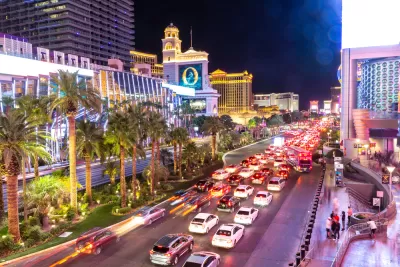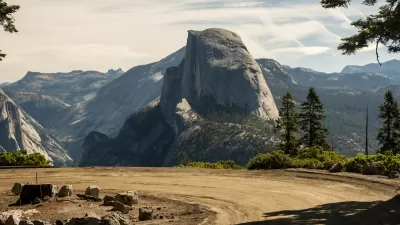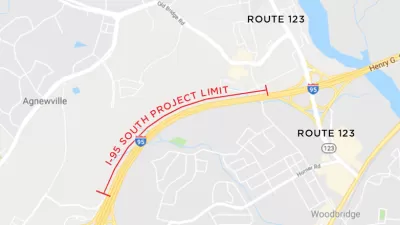The Infrastructure Investment and Jobs Act of 2021 promised to achieve major progress on emissions reductions and climate resilience. A total of 38 states used the bill to fund emissions- and pollution-producing car-centric infrastructure instead.

A total of $755 million in funding intended for climate resilience and emissions reductions from the Infrastructure Investment and Jobs Act (IIJA) has instead been repurposed for highway construction projects, according to a recent article by Ian Duncan in the Washington Post.
Last year, 38 states “made use of a provision in the law” to shift the funding to general-purpose highway construction accounts, reports Duncan, citing records from the Federal Highway Administration acquired through the Freedom of Information Act as proof.
“California shifted $97 million to pay for safety projects. New York moved $36 million to fund what officials called the state’s ‘core capital program,’” writes Duncan “Arizona said it used $20 million for its five-year highway construction program, largely for “pavement preservation,” and Louisiana used $8.2 million to fund roundabouts near an outlet mall.”
“Five states couldn’t account for how the money was used after it was transferred,” adds Duncan.
The Article echoes the news since the IIJA’s adoption—states have complained about slow funding programs while others, such as Nebraska, immediately got to work funding projects that will immediately increase pollution and emissions. To be fair, we were warned this could happen.
As for how states were able to pervert the intentions of these taxpayer-funded funding programs, Duncan blames the bipartisan compromises that produced the IIJA, along with a legal provision predating the law’s approval. “A legal provision predating the infrastructure law allows states to shift up to half of their federal transportation funds among several programs — a provision that also applies to transportation money from the new law,” writes Duncan.
Kevin DeGood, director of the infrastructure program at the left-leaning Center for American Progress, is quoted in the article describing the news about the shifted funding as an “absolute failure.”
FULL STORY: States siphoned away $750 million in infrastructure law climate funds

Planetizen Federal Action Tracker
A weekly monitor of how Trump’s orders and actions are impacting planners and planning in America.

Congressman Proposes Bill to Rename DC Metro “Trump Train”
The Make Autorail Great Again Act would withhold federal funding to the system until the Washington Metropolitan Area Transit Authority (WMATA), rebrands as the Washington Metropolitan Authority for Greater Access (WMAGA).

The Simple Legislative Tool Transforming Vacant Downtowns
In California, Michigan and Georgia, an easy win is bringing dollars — and delight — back to city centers.

DC Backpedals on Bike Lane Protection, Swaps Barriers for Paint
Citing aesthetic concerns, the city is removing the concrete barriers and flexposts that once separated Arizona Avenue cyclists from motor vehicles.

In These Cities, Most New Housing is Under 441 Square Feet
With loosened restrictions on “micro-housing,” tiny units now make up as much as 66% of newly constructed housing.

Albuquerque’s Microtransit: A Planner’s Answer to Food Access Gaps
New microtransit vans in Albuquerque aim to close food access gaps by linking low-income areas to grocery stores, cutting travel times by 30 percent and offering planners a scalable model for equity-focused transit.
Urban Design for Planners 1: Software Tools
This six-course series explores essential urban design concepts using open source software and equips planners with the tools they need to participate fully in the urban design process.
Planning for Universal Design
Learn the tools for implementing Universal Design in planning regulations.
Smith Gee Studio
City of Charlotte
City of Camden Redevelopment Agency
City of Astoria
Transportation Research & Education Center (TREC) at Portland State University
US High Speed Rail Association
City of Camden Redevelopment Agency
Municipality of Princeton (NJ)





























